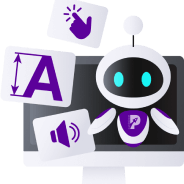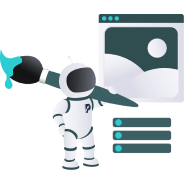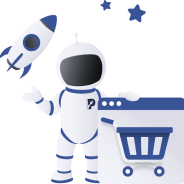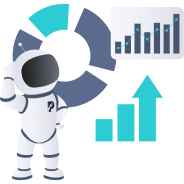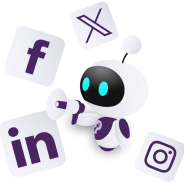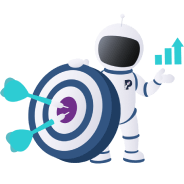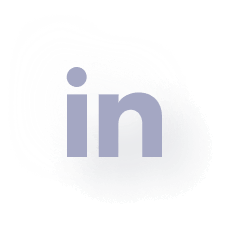

8 Techniques to Boost Conversion Rates with Landing Pages
Landing pages play a fundamental role in determining conversion rates, acting as the first impression potential customers get of your business.
A well-designed landing page can guide visitors toward taking the desired action, whether it’s making a purchase, signing up for a newsletter, or downloading a resource. Optimising these pages is essential for improving conversion rates. From compelling headlines and engaging visuals to clear calls-to-action and mobile responsiveness, there are numerous strategies to enhance the effectiveness of your landing pages.
In this blog, we’ll explore the best practices and innovative techniques to help you maximise your landing page performance and drive higher conversions.
1. Clear and compelling headlines
The first thing you can do to optimise your landing page is to have a strong headline as this is the primary element that captures visitors’ attention and conveys your main proposition.
The most compelling headlines immediately engage the reader. You can achieve this through powerful and intriguing language – words like “discover,” “exclusive,” or “free.” You want to convey a sense of urgency but also highlight the main benefits of your offering.
When conveying benefits, focus on what the user will gain. For example, instead of a vague statement like “Our software is fast,” a more compelling headline would be “Boost Your Productivity with Lightning-Fast Software.”
In terms of design, the hero text should use a font that is both readable and visually appealing. Clean fonts are ideal for a modern and professional look, and they should be a size that is readable at a glance. High-contrast colours between the text and background enhance readability and should align with your brand’s identity.
To ensure the headline remains the focal point, it should be prominently positioned at the top or centre of the page, supported by a subheading or call-to-action. Don’t forget that regular
A/B testing of different headline variations can help identify the most effective wording and design – you are always free to switch things up.
2. Strong call-to-action (CTA)
Your CTA is responsible for guiding visitors to take a certain action. As such, it needs to be punchy, attractive, and effective.
Whether you want visitors to sign up to your mailing list, download a resource, or make a purchase, your CTA is an essential part of your landing page.
To ensure its success, your CTA should be prominently displayed and stand out visually on the page. Using contrasting colours for the button can draw attention and make it easily distinguishable from other elements. The text on the CTA button should be concise and action-oriented, using phrases that clearly convey the next step, such as “Get Started,” “Sign Up Now,” or “Claim Your Free Trial.”
The CTA should be strategically positioned where it is easily accessible and visible, typically above the fold, so visitors don’t need to scroll to find it. For longer landing pages, repeating the CTA at logical intervals can help maintain its visibility as visitors scroll through the content.
Additionally, the size and shape of the CTA button should be designed to attract clicks without overwhelming the page layout. A slightly larger button with rounded edges can be inviting and visually appealing. Including a sense of urgency or value in the CTA text, such as “Limited Time Offer” or “Join Free for 30 Days,” can further motivate visitors to act quickly.
Similarly to your headline, we encourage you to use A/B testing to evaluate and improve the efficacy of your CTA. Changing its colour, design, and text may be what you need to improve your conversion rate.
3. Minimalist design
A minimalist design is stripped of unnecessary elements and distractions, making it a great strategy for engaging and direct landing pages. By keeping your design minimal, your landing page will be clear and focused. Reducing the cognitive load on visitors, minimalism is very user-friendly as it’s easy to understand and navigate.
Minimalist designs often result in faster loading times, as there are fewer elements and images to load. Faster page loads can reduce bounce rates and improve user satisfaction, both of which are crucial for higher conversion rates.
To implement a minimalist design, focus on essential elements such as a strong headline, a compelling CTA, and high-quality images or graphics that support the message. Use a limited colour palette to create a cohesive look and avoid clutter by minimising the use of text and other content blocks. You’ll need to use ample white space and create an organised layout –
each element should serve a clear purpose and contribute to the overall goal of the landing page.
4. Social proof
Another way to convert website visitors is through trustworthiness – and social proof is a long-standing method.
Incorporating social proof into your landing page is a powerful way to build credibility. Reviews, testimonials, case studies, and logos from well-known clients leverage the influence of others’ experiences and reassure potential customers about the value and reliability of your products or services.
When potential customers see positive experiences from others, especially those similar to themselves, it reduces perceived risk and increases their confidence in making a purchase or taking action. Including specific details, such as the customer’s name, photo, and company, can add to the authenticity and impact of the testimonials.
Displaying logos of well-known clients or industry partners further enhances credibility by associating your brand with reputable and recognisable entities. This association can create a perception of quality and reliability, encouraging new customers to trust your business.
Case studies offer detailed insights into how a product or service has successfully addressed specific challenges for other customers. This type of social proof not only demonstrates effectiveness but also helps potential customers visualise how the solution can meet their own needs.
If you decide to display social proof on your landing page, make sure you don’t overcomplicate things. It’s still really important that your landing page is succinct and clear. Of course, you can always create an entirely different page dedicated to more detailed social proof, so keep things simple yet effective on your hero page.
5. Responsive and fast-loading pages
Since 83% of consumers expect a website to load in three seconds or less and 40% will abandon a site if it takes longer, site loading speed is essential. Your conversion rate will never improve if your bounce rate is super high.
Optimising the speed of your site will improve your overall strategy because users won’t lose interest at the first hurdle. While a responsive site is pleasing, a low one is infuriating.
A responsive design is one where web pages adapt seamlessly to different devices and screen sizes, providing an optimal viewing experience for all users. This adaptability is essential since a significant portion of web traffic comes from mobile devices. To achieve fast-loading pages, several best practices should be implemented. These include:
- Optimising images by reducing their file size
- Enabling browser caching to speed up load times for returning visitors
- Using Content Delivery Networks (CDNs)
- Minimising the use of heavy scripts and plugins
6. Benefit-oriented content
Once your site visitors are thoroughly intrigued, your landing page must convey more detail about your offering.
The landing page’s content must highlight the features and advantages of your products or services, highlighting what users stand to gain by interacting with your website. Take this opportunity to address the needs and desires of your target audience, detailing why your offering answers their pain points.
We touched on this earlier, but it’s important to reiterate. When wording your content, focus on the benefits: instead of stating your software is “fast,” note that users will “increase productivity.” This way is more compelling, and visitors will imagine using your offering more easily.
When laying out your information, use short paragraphs and bullet points to make it more digestible. Visuals such as infographics, images, or videos can further enhance understanding and retention of information by illustrating benefits in a more dynamic and memorable way.
7. Visual hierarchy
Another way of optimising your landing page is designing it with visual hierarchy in mind.
Visual hierarchy refers to the arrangement and presentation of elements on a page in a way that naturally directs the viewer’s attention to the most important information. This technique ensures that the most critical messages (such as CTAs) are easily noticed.
Website owners can enhance visual hierarchy by varying the size, colour, and placement of key elements. Larger and bolder text should be used for headlines to immediately grab attention, while subheadings and body text can be smaller but still legible. Using contrasting colours for CTAs and important information can make these elements stand out against the background, drawing the eye naturally towards them.
Incorporating eye-catching images that are relevant to the content can also enhance visual appeal and engagement. High-quality images or graphics can break up text and make the page more visually interesting, which helps maintain visitor interest. Placing images near related text or CTAs can reinforce the message and encourage visitors to take action.
8. Live chat support
Another way you can encourage conversions with your landing page is by providing excellent customer service.
Live chat support on your landing page can significantly boost conversions since it provides immediate assistance and enhances the user’s experience. Live chat allows site visitors to get instant answers to their queries, reducing hesitation and supporting them through the Consideration phase of the sales funnel.
This real-time support can address any uncertainties that might otherwise lead to abandonment, thereby increasing the likelihood of conversion. Users may have specific queries about product features, pricing, or compatibility, and having these questions answered quickly will lead them to convert much more swiftly.
Additionally, live chat tools often include analytics features that allow website owners to monitor visitor behaviour and gather insights into common questions or concerns. This data can be used to refine landing page content and address frequently asked questions proactively, further enhancing the user experience and conversion potential.
Final thoughts
To drive meaningful engagement and boost conversion rates, modern landing pages must be crafted with a keen focus on user-centric design and functionality. The key to achieving this lies in creating a seamless and compelling user journey from the moment visitors land on the page. By prioritising elements such as clarity, responsiveness, and interactive support, businesses can not only capture attention but also foster trust and facilitate decision-making.
Focusing on user needs helps to streamline the conversion process, allowing your business to grow and remain competitive. These strategies aren’t just for improving your website’s conversion rate, but also for building a strong brand reputation and sustainable customer relationships.

